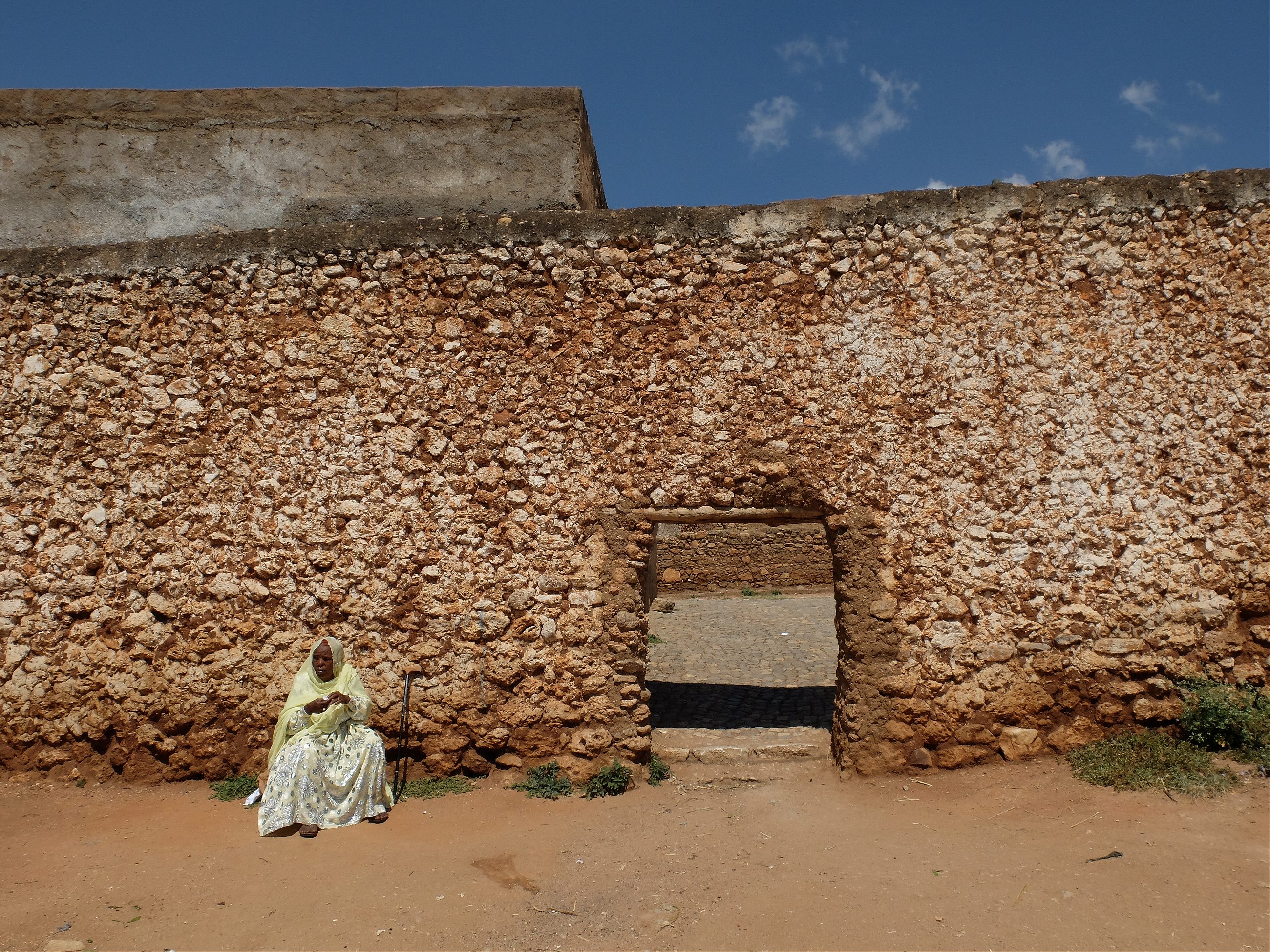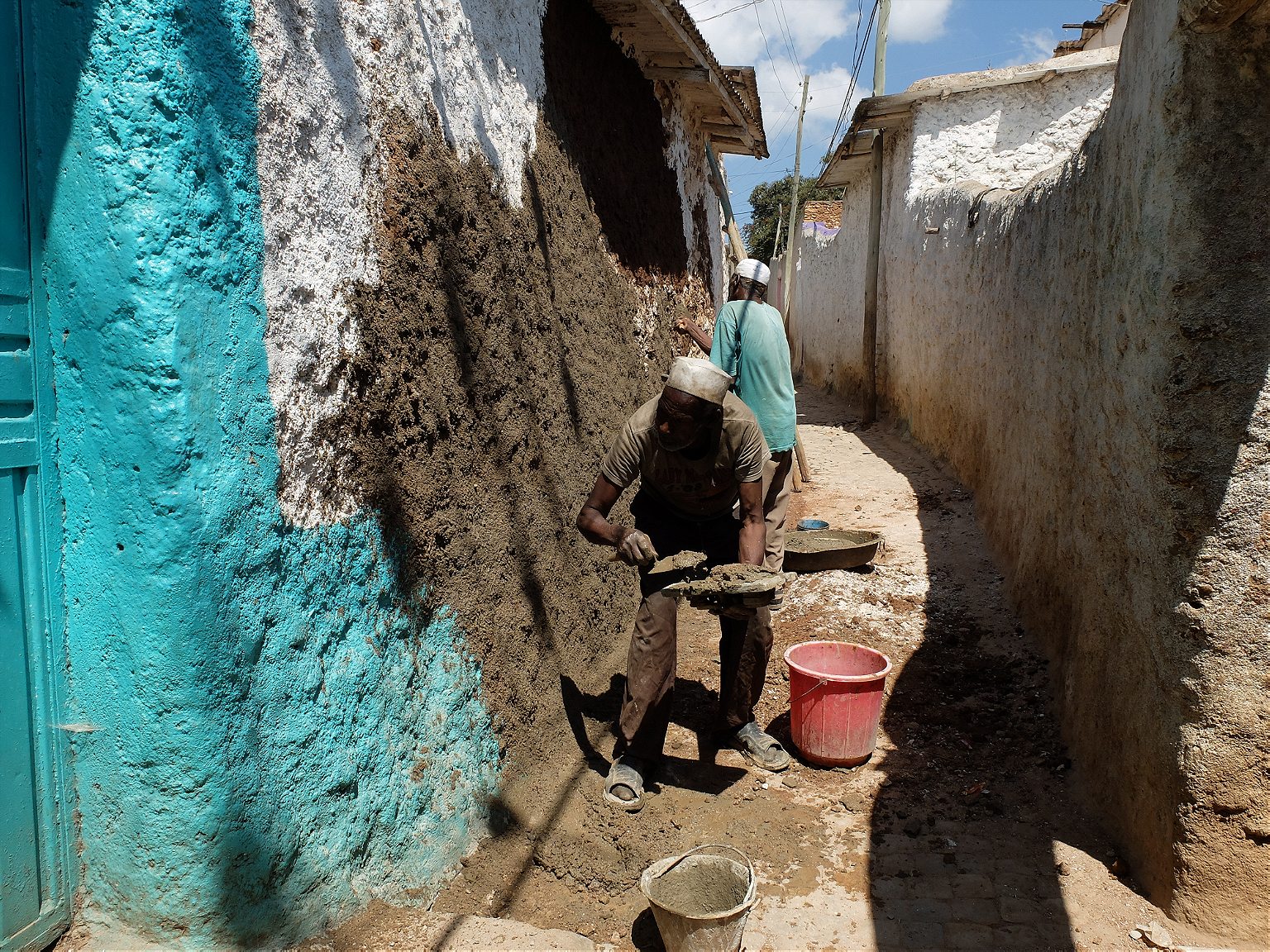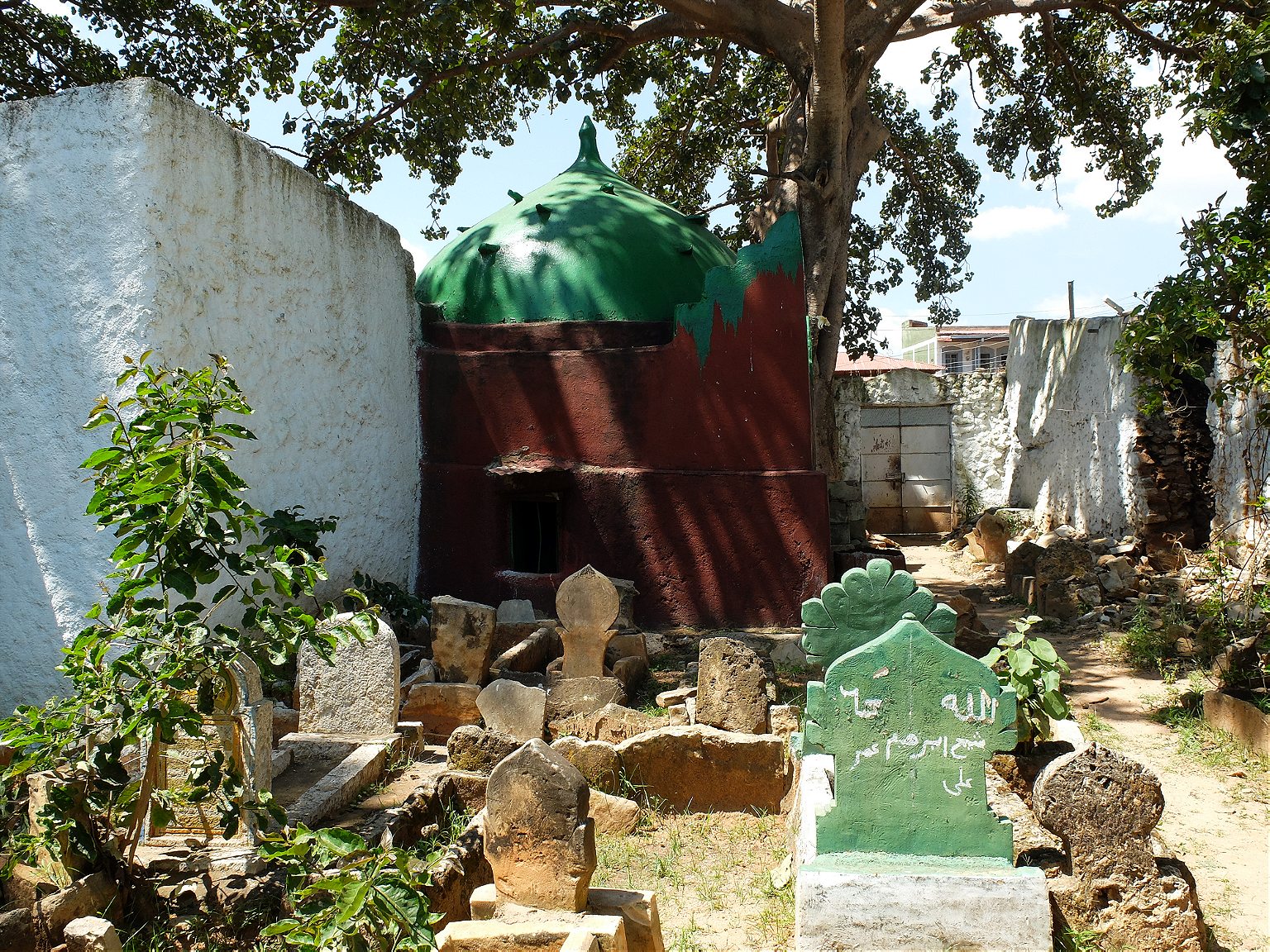A trip to an Ethiopian city for a feeding ritual that shows that we can all get along, at least when there’s enough food to go around.
Hyenas and cities do not mix. Addis Ababa has some experience with this—an estimated 300 to 1000 of the foul pack-hunters and scavengers live in the Ethiopian capital, culling the feral dog and cat population, but also at times victimizing the homeless who live there.
That is what makes the Ethiopian city of Harar, in eastern Ethiopia, such an oddity: in Harar, the hyenas have been fed outside the city walls for centuries. The practice started with Sufi Muslims, who would feed them leftover meat to mark an important Muslim holiday. Even as the practice has evolved into more of a tourist ritual, hyenas still play an important role in the mythology of the town’s beleaguered Sufi community. I wanted to see them for myself.
“I don’t know if the hyenas will be here tonight, but we can try,” my guide Hennok explains as we walk through one of the gates of Harar. Groups of hyenas—a ‘cackle of hyenas’ is the correct terminology—visit the walls of Harar each night to be fed scraps or to scavenge. There have been fewer lately, explains Hennok, because the Turkish government had given out animals to slaughter on the Eid holiday, and local hyenas had been been eating their fill at city dumps. Indeed, the life cycle of Ethiopia’s spotted hyenas is closely connected to human consumption. One study of hyenas found that when Ethiopian Christians fasted for lent, hyenas turned to hunting as less meat scraps were available in garbage dumps.
Hyena feeding in Harar has persevered throughout various occupations. The city at has alternately been coveted by Ottoman sultans, Ethiopian Imperialists, and Italian fascists. Today it retains its importance as a center of geopolitical intrigue of a different kind: the city is a battleground for competing visions of Islam. A new wave of Wahabbi Islam and intolerance again threaten a community that once prided itself on peace and tolerance.
Face to face with Africa’s second-largest predator
Hennok takes me to where a narrow alley opens onto a small field. Here I meet Solomon, a local butcher propped up on a piece of cardboard. He has a basket of meat scraps in one hand and a weak flashlight in the other. In the cool mountain air he pans the small field, and sets of eyes glow back. A cackle of at least 20 hyenas sits up and stares in our direction. The animals slowly begin approaching: the flashlight signals a free meal is to be had. Solomon explains that he uses beef scraps from a Christian butcher shop. The only other hyena feeding site in Harar is run by Yussef, a Muslim who feeds hyenas camel scraps but, Solomon tells me, Christians don’t eat camels, for religious reasons.
Solomon tosses meat to encourage the beasts to draw closer. I join him on the cardboard, snapping photos as he and his friend hold out pieces of raw beef on stick skewers. Hennok assures me that “these hyenas are smart animals”: They would not bite the hand that feeds them. Soon, with some encouragement from Hennok, I have a skewer clenched between my teeth and am face to face with Africa’s second largest predator. After feeding a hyena or two in this manner, I suddenly feel a hyena’s paws on my shoulders. Startled, I move to stand and the animal bolts into the darkness. The Ethiopians laugh at my shock. They had held a skewer of meat over my head and the hyena had used my shoulders like a stool to get it. “This one is a new trick,” explains Solomon with a broad grin.

The city was founded by Arab immigrants in the 11th century AD. Thus, the people of Harar have long considered themselves linguistically and ethnically distinct from both the Oromo people (Harar is located within in Omoria) as well as Amharic speaking Ethiopians. The city soon grew to be an important nexus for the trade of two stimulants: qat and coffee. Centuries later, the British explorer Richard Francis Burton claimed to be the first Westerner to breach its walls in 1842, by posing as a Muslim scholar. “The coffee of Harar is too well known in the markets of Europe to require description,” Burton wrote.
The French poet Arthur Rimbaud lived in Harar from 1880 to 1891. He worked in Harar as a coffee trader and gun runner, spending eight quiet years in the city, witness to an era in which several competing powers traded control over Harar. In 1887, Harar fell to the Ethiopians who attacked the city to thwart Ottoman-Egyptian expansion in the region. In the 20th century, Harar again became a center of intrigue. It was bombed and occupied by Mussolini; the Communists gave the town a brewery (with non-alcoholic malt also on tap for Muslims) built by Czechoslovakia.
To help visitors get a better understand of the area’s history, Abdullahi Ali Sherif opened a small museum filled with artifacts he collected that were related to the town’s history. The museum includes everything from antique Qurans to a plastic statue of Dubai’s Burj Al Khalifa tower brought back by an expatriate worker.

I found Sherif sitting behind his museum on a mat enjoying a midday qat chew, piles of green leaves at his feet (the mild narcotic is legal in Ethiopia). We discuss his museum and efforts to save Harar’s artifacts and culture. When I ask him for his opinion on the greatest threat to Harar’s way of life, I expect to hear gripes about disinterested bureaucrats. Yet, Sherif doesn’t hesitate: “Wahhabi,” he says. “Hararis have gone to the Gulf and become radicalized. They control three of the 87 mosques inside the old city they are against our traditional Islam. This place has a certain harmony but with them there might be trouble.” He worries about the numbers of extremists. Hararis often use the term Wahabbi as a term of opprobrium for a host of new Islamic groups who have little more in common than their distaste for Harari’s Sufis. Yet, his fears seem justified, given that in Iraq, Syria, Pakistan and elsewhere extremist groups have destroyed the shrines—and more—of Sufis, whom the Wahhabi view not as fellow Muslims, but as apostates.
The morning after the hyena feeding Hennok leads me to the Tomb of Sheikh Abadir Umar al-Rida, the founding saint of Harar’s Sufis. For centuries, Harari Sufis have been ritually feeding hyenas on Ashura, a Muslim holiday.
Feeding hyenas has always served a practical purpose as well, he says: the highly territorial animals defend the territory from other cackles, helping to reduce the risk that Africa’s second largest predator will attack humans.
The head of the shrine is wearing a bright green turban and blue robes when I visit. He has a neat silver beard and one of his eyes is glazed over by a cataract. He introduces himself as Mohammed. As I interview him in broken Arabic, he delicately chooses choice leaves from a neat pile of qat at his feet. Also present are half a dozen of his devotees, including a young boy with a Qatar Airways eye mask, sleeping in one corner.

Leaving the shrine, I encounter a group of youths walking around the edge of the old city, in their fresh school uniforms. Rashid, 17, impresses his friends by talking to me in English. A group of school girls giggles as we chat. When I explain I just came from the Sheikh Abadir shrine, he gives an embarrassed look. “The sheikh there, his head is gone from chewing qat. You know qat? We need to remember the real Islam, not this stuff.” Before we part, Rashid tells me his father is working in an Arab Gulf state. Roughly 50% of the urban men between age 15 and 30 are unemployed in Ethiopia. Many young men hope to go overseas for work in Europe or the Gulf, often paying exorbitant fees to recruiting companies or smugglers.
Harar, once a center for international trade, is now a nexus of these competing ideas. At a small informal bookstore near Harar’s bus depot, the shelves are lined with unregistered sim cards and Islamic books. The stall also includes Islamic texts ranging from ones by Harun Yahya, the Turkish Islamic creationist, to the inflammatory Egyptian preacher Yusuf Al-Qaradawi. Yet, elsewhere in the city one finds Western brands for sale, and in a traditional cafe I find a group of students huddled around a Filipino teacher tutoring them in English. In 2011, the state-owned Harar Brewery became a subsidiary of Heineken International, which purchased the company for $78 million, promising to offer more jobs.
In the 1990s, Harar was awarded a UNESCO prize as a City of Peace because so many different ethnic groups lived there harmoniously.
I can’t help but wonder as I feed the hyenas, though: what happens when the meat runs out? Christians and Sufis and Islamists lived perfectly well together in the old, fat days of Harar’s history. But with the economy today flat lining, and with hope for jobs and a better life getting dimmer, it seems like peaceful coexistence, whether between Wahhabi and Sufi or man and hyena, becomes even more unlikely.